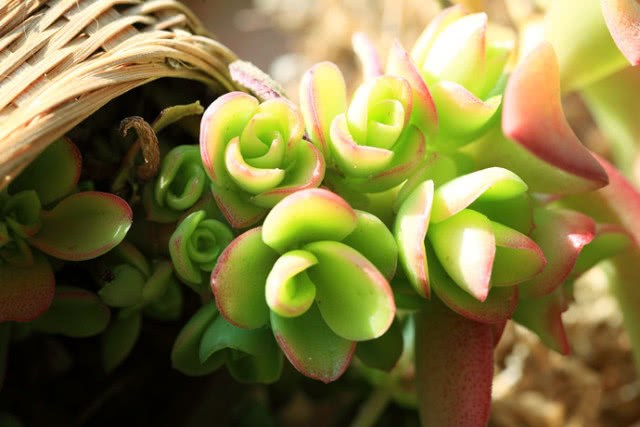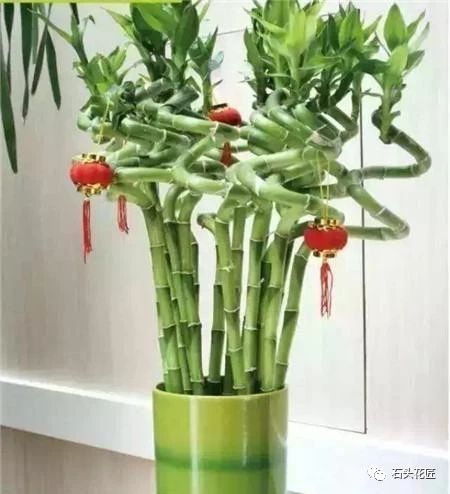Succulent doughnuts. If you don't know that, you will OUT.

Tips
Each circle has its own unique language, and the circle of succulent plants also has its own communication language. In order to better communicate and share experiences with other enthusiasts, these succulent breeding nouns must be known.
Topic
Old pile
After years of growth, succulent branches are no longer tender stems, with the passage of time, the surface slowly aging to form a bark-like structure, Lignification, seen from afar, like a shrinking tree. However, plants with severe Lignification tend to have lower root activity and recover relatively slowly when moving pots and roots. Like people, metabolism and hormone secretion are not as exuberant as they were when they were young.
Group students
Multiple growth points that grow together on the same root stem can be called swarms. Unlike affixation, the growth points of colonies are relatively independent. Social growth is a state of natural growth, ice is not the result of variation, relatively common, usually leaf cuttings are easy to grow many small heads at the same time, when they grow up, they will be grouped plants. When you grow up and fill the container you used before, it can be said that the plant has exploded again.
Affixing
The common abnormal variation phenomenon in plants belongs to the variation phenomenon of plant morphology. Some varieties of succulent plants are stimulated by unexplained external stimulation (watering, sunshine, temperature, medicine, abrupt climate change, etc.). The growth cone at the top of the succulent plant is abnormally divided and doubled, forming many small growth points, which develop laterally into a line and eventually grow into a flat fan-shaped or chicken crown-shaped belt. Because of its strange shape, the ornamental value of the modified variant plant is higher, and because of its scarcity, it is more precious than the original seed (planting). Affixing can also be cuttage, cut and inserted into the soil can take root; but some separate growing points, after cutting, the final growth is not affixed, but ordinary brilliant, the affixed succulent plant is particularly easy to blacken and rot in summer. I am not sure whether the leaves are too dense and poorly ventilated, in short, they must be placed in a cool and well-ventilated place in summer.
Brocade
Due to the influence of many factors, such as watering, sunshine, temperature, medicine, climate mutation and so on, the plant internal control pigment gene has mutated, which leads to the color change of the stem, leaf and other parts of the plant. In the case of crassulaceae, most of the variant colors are red, white and yellow. according to the distribution of colors, they can be divided into full brocade, extreme spot, covering wheel, middle spot, three-light spot, reverse spot and so on.
Burst basin
Succulent plants grow and reproduce by themselves, and the stems and leaves are beyond the scope of the flowerpot, which is called bursting pot. Burst pot means that you are in place, do not worry, it is recommended to move to a larger flowerpot, leaving room for succulent growth.
Leaf
Insert
A form of succulent reproduction in which succulent leaves are inserted into the soil to reproduce a new succulent plant.
It can also be called cuttage, in which the top part of the succulent plant is cut off for reproduction, and the pedestal left at the bottom will grow into a new small head after self-healing wounds.
Chop
Head
Points
Plant
The method of propagation in which the roots and small branches of the stem base of a plant are cut off from the place where the mother plant is connected, and then planted separately to make them grow into independent new plants.
Dormancy
It is a self-protection mechanism of plants. Different varieties will go into dormancy under different temperature conditions. Just as the leaves of plants wither and fall in autumn and sprout in spring, only succulent plants will not all wither and yellow when they are dormant, and they will stop growing at this time. Taking care of the succulent plants during dormancy especially tests the skills and experience of flower friends.
Sultry nourishment
Stuffy culture is a popular maintenance method in low temperature season, which is usually aimed at varieties with high humidity, such as Yulu, Shou, 12 rolls and so on. Buckle a cover equal to the diameter of the flowerpot on the flowerpot, or by means of plastic bags or plastic bags, the main purpose is to create a small greenhouse for succulent plants, increase the air humidity around plants and make succulent plants full and watery.
Note:
1. Succulent plants in stuffy culture can not accept direct sunlight, otherwise it is easy to cause excessive temperature and lead to the consequence of "cooking meat".
2. The succulent plants that have just been watered should not be stuffed immediately. It is recommended to do so when the surface soil layer is dry, but the bottom soil layer is still moist.
3. It is not easy to keep for a long time. It is suggested to take off the transparent cover when the temperature is low at night to let the plants breathe fresh air. It can also increase the temperature difference between day and night, which is beneficial to the growth of succulent plants.
4. Not every kind of succulent plant is suitable for stuffy culture. For example, the adult plants of crassulaceae and Amygdalaceae are disadvantageous to growth.
To grow in vain
Due to the lack of light, succulent plants only grow stalks but do not gain weight. Losing the original short and sturdy shape, the original wrapped leaves become more spread out, and meat friends vividly call this phenomenon "wearing a skirt" or "spreading a cake". Overgrown plants are not only unattractive in shape and lose their bright colors, but also the powder and fluff on the surface of the meat will fade, making them extremely prone to insect disease. For plants that have grown in vain, it is basically impossible to change back. You can wait for the spring and autumn growth period, cut off the top to dry the wound and then insert the branches. Always remember to bask in the sun (except at noon in summer). If you can't guarantee sunshine, water should be controlled a little.
Hydration
Excessive watering or some diseases, low temperature, frostbite and other reasons lead to succulent leaves or stems gradually become transparent, and become soft, fall and rot.
- Prev

How to trim the meat?
Shaping and pruning, in most cases, should be used in trees and shrubs or woody and herbaceous flowers, general succulent plants have no obvious trunk and no obvious branches. Therefore, plastic surgery and pruning work is not very important, but timely,.
- Next

These three kinds of nutrient solutions specially treat the yellow leaves of rich bamboo and add it for 30 days, green and thick roots.
These three kinds of "nutrient solution" specialize in the yellow leaves of rich bamboo, add it a week, and give home some green potted plants with thick green roots for 30 days, which can not only beautify the room and purify the air. And raising potted plants can also attract wealth and fortune for the family, such as rich bamboo.
Related
- Wuhan Hospital Iron Tree Blooming Result Was Instantly Frightened by the Gardener Master
- Which variety of camellia is the most fragrant and best? Which one do you like best?
- What is the small blue coat, the breeding methods and matters needing attention of the succulent plant
- Dormancy time and maintenance management of succulent plants during dormancy
- Minas succulent how to raise, Minas succulent plant pictures
- What are the varieties of winter succulent plants
- How to raise succulent plants in twelve rolls? let's take a look at some experience of breeding twelve rolls.
- Attention should be paid to water control for succulent plants during dormant period (winter and summer)
- Watering experience of twelve rolls of succulent plants
- Techniques for fertilizing succulent plants. An article will let you know how to fertilize succulent plants.

